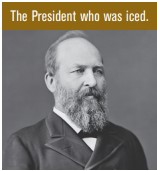In 2014 I wrote several columns for ASHRAE Journal on different ways of using water for refrigeration, but I neglected one of the most ancient, common, easy and effective ones: ice. Ice has been used for thousands of years to provide cooling for food preservation, drinks, comfort and medicine, but until 175 years ago we were dependent on nature to provide it and man to preserve it.
At the beginning of the 19th century, as cities grew, ice harvesting became big business. A Boston business man, Frederic Tudor, was one of the first to see the potential on an epic scale and in 1806 he started to ship ice from the Northeastern United States to the tropics, first to Martinique then the rest of the Caribbean and eventually as far away as India. It took Tudor 25 years to build his business. His first sailing was a total failure as his precious cargo melted on the quayside while the customs men argued about the tariff that should be applied to it. However, once the value of frozen water was appreciated in tropical climates trade really took off.
Warehouses were required to store the ice and were initially constructed using sawdust as insulation. Sawdust was a valuable commodity and trees were cut down just to turn them into insulating material. In England ice was shipped from Norway, with the first consignment in 1822, although it also melted on the London docks before it could be used. By the end of the century Norway was exporting one million tons of ice a year and had 99% of the English market.
In North America ice initially was harvested from lakes and rivers close to the big cities but as the water became progressively more polluted supplies had to come from farther away to ensure the water was sanitary. The first mechanically produced ice was made in Apalachicola, Fla., in 1844 by a doctor for treating his malarial patients. Dr. John Gorrie used a rudimentary air-cycle machine and was initially derided for his attempts to “make ice as good as God Almighty.” Gorrie failed to make a commercial success of his invention but others followed with a wide range of technologies and once the market for “artificial ice” became established it grew rapidly.
One of the key drivers in the United States was the Civil War. There was a blockade of ice shipments from the North to the South and five French ice machines using the Carré absorption system were smuggled into Texas in 1862. Five years later the first CO2 ice maker was built and after a further five years the first ammonia compression system. The superior quality of artificial ice, cleaner and healthier, was a major selling point. It could also be made in clear blocks by using distilled water from the steam engines that powered the ammonia mpressors.
Medical uses for ice continued, although generally for patient comfort rather than clinical reasons. When President James Garfield was shot at a railway station on July 2, 1881, as he left Washington, D.C., for summer vacation he was rushed back to the White House, conscious and alert but with a bullet lodged near his spine. In one of the hottest summers on record a team of Navy engineers rigged up a system to blow air over blocks of ice and cloths soaked in ice water to keep the president cool. It is estimated that, over the summer, 500,000 lb (226 796 kg) of ice was used in this way. Garfield survived for 80 days but his wounds became horribly septic and he died on September 19. If the ice treatment was applied for 60 days then 500,000 lb (226 796 kg) equates to about 4 tons (15 kW) cooling capacity, which is not unreasonable. When Garfield’s attacker, Charles Guiteau, was tried for murder he pleaded not guilty, suggesting that it was medical malpractice that caused the President’s death and saying “I deny the killing, if your honor please.We admit the shooting.” The jury didn’t buy this line.

